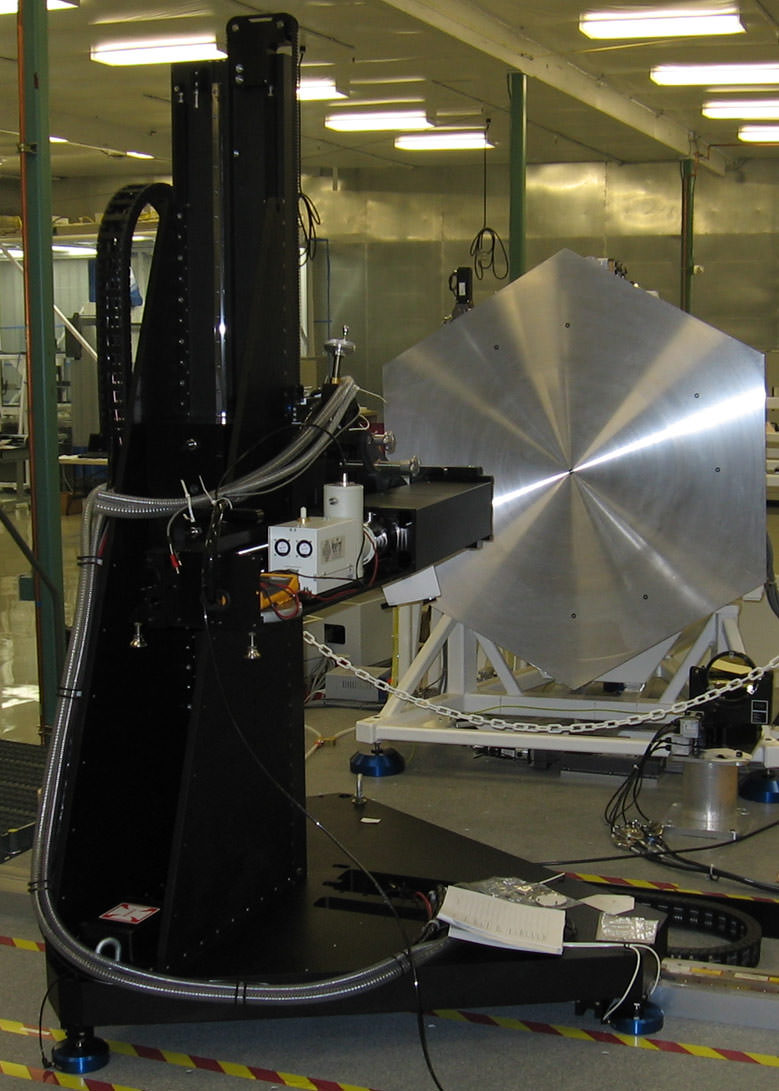[/caption]
Editor's note: This NASA press release provides just one example of how developing technology for space missions often has practical, beneficial and sometimes unintended applications on Earth.
Even while construction of the James Webb Space Telescope is underway on the most advanced infrared vision of any space observatory, its technologies are already proving useful to human eye health here on Earth.
"The Webb telescope program has enabled a number of improvements in measurement technology for astronomy, mirror fabrication, and measurement of human eyes, diagnosis of ocular diseases and potentially improved surgery," said Dr. Dan Neal, Research Fellow at Abbott Medical Optics Inc. in Albuquerque, N.M.
The Webb telescope will be the most scientifically powerful telescope NASA has ever built -- 100 times more powerful than the Hubble Space Telescope. The Webb telescope will find the first galaxies that formed in the early universe, connecting the Big Bang to our own Milky Way Galaxy. It will also peer through dusty clouds to see stars and planets being born, connecting star formation in our own galaxy with the solar system.
"The advanced wavefront sensing technology developed for testing the Webb telescope's 18 primary mirrors led to the new applications in other areas," said Tony Hull of L3 Integrated Optical Systems Division-Tinsley Facility in Richmond, Calif., where the Webb's mirrors were recently polished to accuracies of less than one millionth of an inch.
"Wavefront sensing" is used to measure shape of the mirrors during fabrication and control the optics once the telescope is in orbit.
Ophthalmologists routinely use wavefront technology to measure aberrations of the eye. Those measurements help with diagnosis, research, characterization and planning treatment of eye health issues.
"The technology also provides more accurate eye measurements for people about to undergo Laser Refractive Surgery," Neal said. "To date 10-12 million eyes have been treated with Lasik procedures in the U.S. alone. As technology improves, so does the quality of these procedures."
[caption id="attachment_29057" align="aligncenter" width="150" caption="James Webb Space Telescope. Credit: NASA"]
[/caption]
A new "scanning and stitching" technology developed for the Webb telescope led to a number of innovative instrument concepts for more accurate measurement for contact lenses and intra-ocular lenses. Another benefit to eye health is that this technique can help "map" the topography of the eye more accurately.
Think of the surface of your eye as being as dented as the surface of the moon. Precise measurements of your eye's surface are helpful when assessing eyes for contact lenses. The scanning and stitching technology improvements have enabled eye doctors to get much more detailed information about the shape and "topography" of your eye, and do it in seconds rather than hours. Four patents have been issued as result of innovations driven by the Webb telescope program. "These tools are now used to align and build the next generation of measuring devices for human eyes," Neal said.
"The lasting impact of the Webb telescope may go beyond the vision of astronomers seeking to see the distant universe; the impact may be a better national technology base and better vision for people everywhere," Hull said.
NASA's Innovative Partnerships Program Office (IPPO) is making available wavefront sensing and adaptive optics technologies, procedures and lab equipment to private industry through its "Can you See it Now?" campaign. All of the technologies associated with the campaign are available for licensing and can be found at http://ipp.gsfc.nasa.gov/wavefront.
 Universe Today
Universe Today
